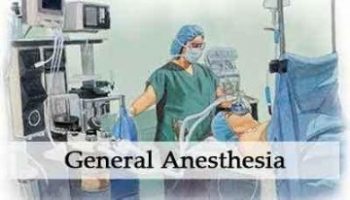- Home
- Editorial
- News
- Practice Guidelines
- Anesthesiology Guidelines
- Cancer Guidelines
- Cardiac Sciences Guidelines
- Critical Care Guidelines
- Dentistry Guidelines
- Dermatology Guidelines
- Diabetes and Endo Guidelines
- Diagnostics Guidelines
- ENT Guidelines
- Featured Practice Guidelines
- Gastroenterology Guidelines
- Geriatrics Guidelines
- Medicine Guidelines
- Nephrology Guidelines
- Neurosciences Guidelines
- Obs and Gynae Guidelines
- Ophthalmology Guidelines
- Orthopaedics Guidelines
- Paediatrics Guidelines
- Psychiatry Guidelines
- Pulmonology Guidelines
- Radiology Guidelines
- Surgery Guidelines
- Urology Guidelines
Stimulation of dopamine neurons induces arousal of mice receiving general anesthesia

The latest study from a Massachusetts General Hospital (MGH)/Massachusetts Institute of Technology (MIT) team investigating the mechanisms underlying general anesthesia finds that stimulating a specific group of neurons in mice produces signs of arousal including getting on their feet and walking even as the animals continue to receive the anesthetic drug isoflurane. In addition to developing ways to actively reverse anesthetic-induced unconsciousness, the findings may someday help improve treatment of conditions such as coma or opioid overdose.
"There currently are no ways to actively wake someone from general anesthesia, and understanding the mechanisms that promote arousal could help us develop therapies to treat other low-arousal conditions, such as traumatic brain injury," says Norman Taylor, MD, PhD, of the MGH Department of Anesthesia, Critical Care and Pain Medicine, lead author of the report published online in the Proceedings of the National Academy of Sciences. "Finding one set of neurons that is able to produce such a powerful arousing effect changes the way we think about recovery from anesthesia and possibly coma as well."
Taylor is part of a team led by Emery Brown, MD, PhD, of the MGH Department of Anesthesia, Critical Care and Pain Medicine and the MIT Department of Brain and Cognitive Sciences, that has been investigating both how general anesthesia induces unconsciousness and ways of reversing the effects. Several previous studies led by Ken Solt, MD, MGH Department of Anesthesia, the senior author of the current study, found that stimulant drugs such as methylphenidate and amphetamine could restore consciousness to animals continuing to receive general anesthetics. A paper in the August 2014 issue of Anesthesiology found that stimulating the ventral tegmental area (VTA), a brain region that releases the neurotransmitter dopamine, also could arouse anesthetized rats.
Since the electrical stimulation used in the 2014 study can activate all adjacent neurons, the current study used optogenetics, a method of activating specific populations of neurons by means of light, to target only dopamine-responsive neurons in the VTA. Every one of six mice engineered to express a light-responsive protein in dopamine neurons showed signs of arousal including moving, standing up and walking in response to pulses of light delivered to the VTA, even while they continued to receive isoflurane. Use of an agent that blocks signaling by the D1 receptor one of five dopamine receptors prevented the arousal response to light stimulation, indicated that dopamine signaling was responsible for counteracting anesthetic effects. EEG readings taken during optogenetic stimulation of the VTA showed patterns similar but not identical to those of unanesthetized animals.
"We now need to study whether the activation of dopamine neurons can help in coma like states," says Taylor, who is an instructor in Anesthesia at Harvard Medical School. "One of the effects of dopamine neuron stimulation we observed was increased respiratory rate, which may have implications for treating the sedating effects of medications such as opioids and provide insight into how to save the lives of more overdose patients."

Disclaimer: This site is primarily intended for healthcare professionals. Any content/information on this website does not replace the advice of medical and/or health professionals and should not be construed as medical/diagnostic advice/endorsement or prescription. Use of this site is subject to our terms of use, privacy policy, advertisement policy. © 2020 Minerva Medical Treatment Pvt Ltd